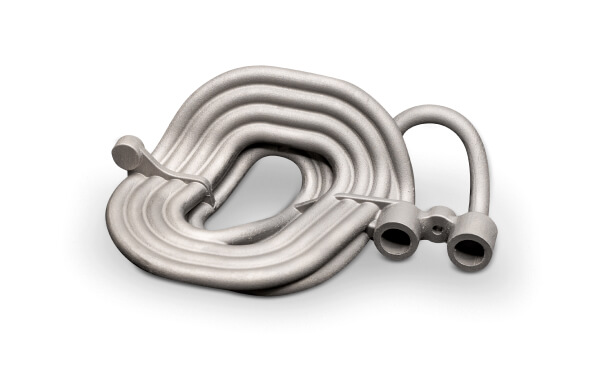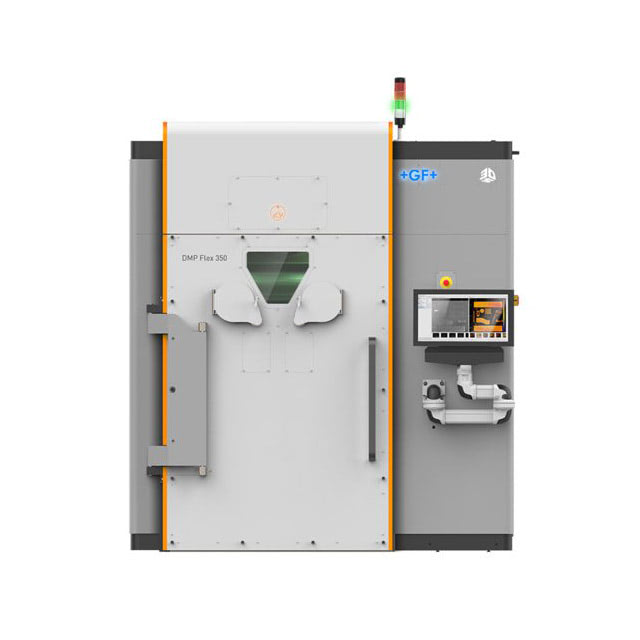Use Case
Alpine F1 Team uses AM to Manufacture Titanium Accumulator
Formula 1 is the pinnacle of automotive engineering. So in this brutally competitive technology field, how does one stay ahead of the game and maintain (ahem)…pole position? With metal additive manufacturing, naturally! And the Alpine F1 team is doing just that thanks to their DMP metal printing system.
In particular, Alpine has been working with 3D Systems on the production of a titanium hydraulic accumulator for their F1 car. The accumulator is part of the suspension system.
For the accumulator, specifically a rear heave fluid inerter coil, Alpine F1 Team designed a hard-line damper, which is part of a rear heave damper in the rear suspension system inside the gearbox main case.
The accumulator is a long, rigid piece of tubing that stores and releases energy to average out pressure fluctuations. As such, the performance of the line damper is correlated to its internal volume, and the length of the component.
Thanks to 3D printing the Alpine F1 Team was able to maximize the length of the dampening coil while packaging complete functionality within a restricted volume.
“Beyond the necessary accuracy of the part itself, we had very strict fluid cleanliness requirements for the inverter coil that could only be achieved by partnering with 3D Systems,” said Pat Warner, Advanced Digital Manufacturing Manager, Alpine F1 Team.
“Their proprietary cleaning process has a proven track record in high performance applications for delivering particle-free components, even on challenging internal channels.”

As the accumulator is a fluid system, it requires the fluid to be free of contaminants in order to function optimally. Naturally, metal AM is not exactly the cleanest of processes, being powder based. Evacuating the printed parts of debris is critical to the working of the part.
To achieve thorough material evacuation on these complex metal prints 3D Systems’ AIG contributed its vast process knowledge to apply a proprietary cleaning protocol that has been successfully used on to tens of thousands of parts, and ensures particle-free titanium components.
And it’s not only the physical particulate matter that can cause issues. The printing chamber environment must be pure as well to avoid oxidation of the powder.
To this end, those printing with the 3D Systems DMP Flex 350 can expect to achieve printing in an environment of less than 25 parts per million of oxygen, making it the best in-class printer in terms of oxygen levels. This guarantees strong and repeatable parts of a consistent quality, which is just what you want when racing around a track in a multi-million dollar car.
To read more about the 3D Systems range of metal printers, head on over to this link.
3D Systems DMP Flex 350
DMP Flex 350 is designed for R&D projects, application development or serial production. Yet it is easily scalable for volume part production. Quick-swap build modules and fast powder recycling speed up production. A central server manages print jobs, materials, settings and maintenance for 24/7 productivity.
View Details DMP Flex 350
DMP Flex 350
- - Reduced weight/light-weight design
- - Orthopedic and spinal implants
- - Simplified assemblies
- - Reduced number of parts
- - Conformal cooling
- - Enhanced fluid flow
- - Conformal latticework
- - Topology optimization
- - Mass customization


